As the world grapples with the dual challenges of climate change and the growing demand for clean energy, solar power has emerged as a crucial solution. Traditional ground mounted solar farms and rooftop installations have significantly contributed to the expansion of solar energy. However, the increasing scarcity of suitable land for these installations has prompted the exploration of innovative alternatives. Floating solar farms, which involve the deployment of photovoltaic panels on bodies of water, have gained attention as a promising approach to maximize space and enhance efficiency. This article delves into the technology, benefits, challenges, and future prospects of floating solar farms.
The Technology Behind Floating Solar Farms
Floating solar farms, also known as floatovoltaics, involve installing solar panels on platforms that float on water surfaces such as lakes, reservoirs, ponds, and coastal areas. These platforms are typically made from durable, buoyant materials like high-density polyethylene (HDPE) and are designed to withstand various weather conditions. The solar panels are mounted on these platforms, and the entire system is anchored to the bottom of the water body or moored to the shore to prevent drifting.
The primary components of a floating solar farm include:
1. Floating Platforms
Material: High Density Polyethylene (HDPE) or similar buoyant, durable materials.
Function: Support solar panels and keep them afloat on water surfaces. Designed to resist UV radiation and corrosion, these platforms need to be robust and capable of enduring harsh weather conditions.
2. Solar Panels
Type: Photovoltaic (PV) panels, typically monocrystalline or polycrystalline.
Function: Convert sunlight into electricity. For floating installations, panels are often coated with protective layers to guard against moisture and humidity.
3. Mounting Systems
Material: Corrosion resistant metals or treated composites.
Function: Securely attach solar panels to the floating platforms. These systems must be adjustable to accommodate the angle of the panels for optimal sunlight exposure and withstand the movement of water.
4. Anchoring and Mooring Systems
Components: Anchors (concrete blocks, helical anchors), mooring lines (cables, chains).
Function: Secure the floating platforms in place, preventing drifting due to wind, currents, or waves. The choice of anchors and mooring systems depends on the depth, type of water body, and local environmental conditions.
5. Electrical Infrastructure
Inverters
Type: Central or string inverters, depending on the size of the installation.
Function: Convert the direct current (DC) generated by solar panels into alternating current (AC) for use in the grid or local consumption.
Transformers
Function: Step up or step down the voltage of the electricity generated to match the requirements of the grid or storage systems.
Underwater Cables
Type: Submarine power cables, specially designed for underwater use.
Function: Transmit electricity from the floating platforms to the shore based electrical infrastructure.
Junction Boxes and Connectors
Material: Waterproof and corrosion resistant materials.
Function: Safely combine and distribute the electrical output from multiple solar panels and inverters.
6. Monitoring and Control Systems
Components: Sensors (temperature, irradiance, humidity), data loggers, communication modules.
Function: Continuously monitor the performance of the solar panels and the overall system. These systems provide real-time data on power generation, panel conditions, and environmental factors, enabling efficient management and maintenance.
7. Maintenance Equipment
Cleaning Systems
Type: Automated or manual cleaning systems.
Function: Keep the solar panels free from debris, dirt, and bird droppings, which can reduce their efficiency. Automated cleaning systems can be integrated to minimize manual labor.
Inspection Tools
Components: Drones, thermal cameras, inspection boats.
Function: Regularly inspect the condition of solar panels, floating platforms, and anchoring systems. Drones equipped with thermal cameras can identify hot spots or damaged panels.
8. Safety and Environmental Protection Equipment
Safety Gear
Components: Life jackets, safety harnesses, protective clothing.
Function: Ensure the safety of personnel during installation and maintenance activities on the water.
Environmental Protection Systems
Components: Boom barriers, spill containment equipment.
Function: Protect the surrounding water body from any potential contamination or pollution during installation and maintenance.
9. Transportation and Installation Equipment
Boats and Barges
Function: Transport solar panels, floating platforms, and other equipment to the installation site. Barges can serve as work platforms during the assembly and deployment of the floating solar farm.
Cranes and Hoists
Function: Lift and position heavy equipment and components during the installation process.
Benefits of Floating Solar Farms
Space Optimization
One of the most significant advantages of floating solar farms is the efficient use of space. By utilizing bodies of water, these installations avoid the competition for land that is often a barrier for ground mounted solar farms. This is particularly beneficial in densely populated areas and regions with limited land availability.
Enhanced Efficiency
Floating solar panels can operate more efficiently than their land based counterparts due to the cooling effect of water. The proximity to water helps to lower the temperature of the solar panels, reducing thermal stress and improving their performance. Studies have shown that floating solar panels can produce up to 10-15% more electricity compared to ground-mounted systems under the same conditions.
Environmental Benefits
Floating solar farms offer several environmental benefits:
Reduced Land Use: By avoiding land-based installations, floating solar farms preserve natural habitats and agricultural land.
Water Conservation: The panels provide shade, reducing water evaporation from the surfaces they cover. This can be particularly valuable in arid regions where water conservation is critical.
Algal Bloom Prevention: By shading the water surface, floating solar panels can help reduce the growth of harmful algae, improving water quality.
Integration with Existing Infrastructure
Many floating solar farms are installed on man-made water bodies such as reservoirs and dams. Integrating solar power with existing hydroelectric facilities can enhance the efficiency and reliability of energy production. The combination of hydroelectric and solar power can provide a more consistent and reliable energy supply by balancing the variability of solar power with the stable output of hydroelectric plants.
Challenges and Considerations
Technical Challenges
While floating solar farms offer numerous advantages, they also present several technical challenges:
Structural Integrity: The platforms and anchoring systems must be designed to withstand varying water levels, currents, and weather conditions. Ensuring the longevity and stability of these systems is crucial.
Corrosion and Maintenance: The aquatic environment can accelerate the corrosion of metal components and the degradation of materials. Regular maintenance and the use of corrosion-resistant materials are essential to ensure the longevity of floating solar farms.
Energy Transmission: Transmitting electricity generated on water to the grid requires specialized underwater cabling and connectors, which can be more expensive and complex than land based systems.
Environmental and Regulatory Concerns
The deployment of floating solar farms must consider potential environmental impacts and regulatory requirements:
Aquatic Ecosystems: The installation and operation of floating solar farms can affect aquatic ecosystems. It is important to conduct thorough environmental assessments to mitigate any negative impacts on flora and fauna.
Water Quality: While floating solar panels can reduce algae growth, they may also affect oxygen levels in the water and other ecological dynamics. Monitoring and managing water quality is essential.
Permitting and Regulations: Obtaining the necessary permits and complying with regulations for water based installations can be complex and time consuming. Different regions have varying requirements that must be navigated.
Economic Factors
The economic viability of floating solar farms depends on several factors:
Initial Costs: The cost of constructing floating platforms, anchoring systems, and specialized electrical infrastructure can be higher than traditional solar farms. However, these costs are often offset by the higher efficiency and reduced land acquisition expenses.
Maintenance Costs: Regular maintenance is required to ensure the longevity and performance of floating solar farms. This includes cleaning the panels, inspecting the structural integrity, and maintaining the anchoring systems.
Financing and Incentives: Access to financing and government incentives can significantly impact the feasibility of floating solar projects. Policies that support renewable energy development can encourage investment in floating solar farms.
Case Studies and Examples
Several successful floating solar farms around the world demonstrate the potential and viability of this technology:
Japan
Japan, with its limited land availability, has been a pioneer in floating solar technology. The Yamakura Dam floating solar plant, completed in 2018, is one of the largest floating solar installations in the world. Covering an area of 180,000 square meters, it has a capacity of 13.7 MW and generates enough electricity to power approximately 5,000 households.
China
China, the world’s largest solar market, has also embraced floating solar farms. The Anhui Province is home to a massive 40 MW floating solar farm built on a former coal mining area that has since become a flooded lake. This project not only generates clean energy but also repurposes land that was previously unusable.
India
India, with its ambitious renewable energy targets, has started investing in floating solar farms to overcome land constraints. The state of Kerala is developing a 500 MW floating solar project on the Banasura Sagar Dam, which will be one of the largest floating solar installations in the country.
Future Prospects and Innovations
The future of floating solar farms looks promising, with ongoing research and development aimed at improving technology and expanding its applications. Some areas of focus include:
Advanced Materials
Research into advanced materials can lead to more durable and efficient floating solar platforms. Innovations such as anti corrosive coatings, improved buoyant materials, and self-cleaning solar panels can enhance the longevity and performance of floating solar farms.
Hybrid Systems
The integration of floating solar farms with other renewable energy sources, such as wind and hydroelectric power, can create hybrid systems that maximize energy production and reliability. For example, combining floating solar panels with offshore wind turbines can optimize the use of ocean space and provide a consistent energy supply.
Energy Storage
Developing efficient energy storage solutions is crucial for managing the intermittent nature of solar power. Combining floating solar farms with battery storage systems can ensure a stable and reliable energy supply, even during periods of low sunlight.
Global Expansion
As the technology matures and costs decrease, floating solar farms are expected to expand globally, particularly in regions with high population density and limited land availability. Countries in Southeast Asia, Africa, and Latin America, where water bodies are abundant, are likely to see significant growth in floating solar installations.
Floating solar farms represent a transformative approach to harnessing solar energy, addressing the challenges of land scarcity, and enhancing the efficiency of solar power generation. By utilizing water surfaces, these innovative installations offer numerous benefits, including improved efficiency, environmental conservation, and integration with existing infrastructure. Despite technical, environmental, and economic challenges, the future of floating solar farms looks promising, with ongoing advancements and expanding global adoption. As the world continues to seek sustainable energy solutions, floating solar farms are poised to play a critical role in the transition to a cleaner and more resilient energy future.



